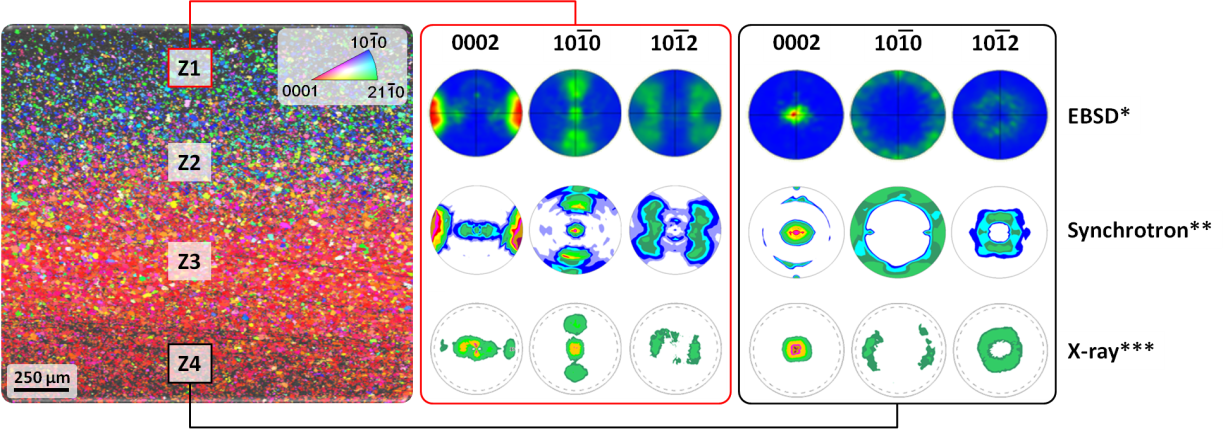Department Microstructure and Residual Stress Analysis
Texture and microstructure analysis
The orientation of crystallites in a polycrystalline material is called (crystallographic) texture. Thin films, drawn wires or rolled plates often possess a strongly preferred crystallite orientation (i.e. a texture in the narrower sense) leading to a deep impact on the material properties. The same applies to the materials microstructure, which is defined by the size and the distribution of perfect (i.e. defect free) crystal lattice domains as well as by the average microstrain caused by lattice defects such as dislocations and stacking faults.
In our department we develop and employ advanced X-ray and diffraction methods which allow to characterize the materials texture and microstructure in dependence on the depth below the sample surface. The information on texture and microstructure is contained in the integrated intensity and in the shape/width of the diffraction lines, respectively. The application of energy-dispersive diffraction being available at the instruments (LIMAX-160 and LEDDI) in our department provides some important advantages, because complete diffraction patterns with a multitude of diffraction lines are obtained for any measuring direction.
Recent and current research activities in the field of diffraction texture and microstructure analysis are aimed at the development of measuring and data evaluation techniques that are based on energy-dispersive diffraction. Research topics are for example:
- Development of high resolution real space depth-scanning techniques using a two-detector setup
- Development of strategies for fast data acquisition for in situ monitoring texture and microstructure evolution during dynamic processes
- Development of a Rietveld based platform for energy-dispersive line profile and texture analysis.


